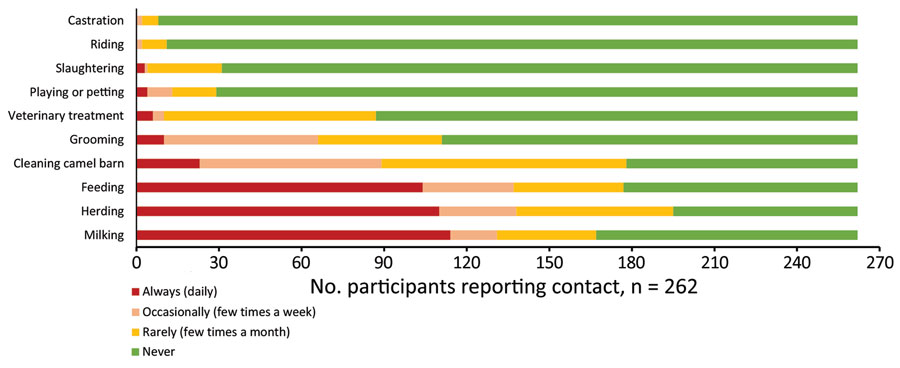Volume 27, Number 4—April 2021
Dispatch
Low-Level Middle East Respiratory Syndrome Coronavirus among Camel Handlers, Kenya, 2019
Figure 2

Figure 2. Types and frequency of contacts with camels among participants in study on Middle East respiratory syndrome coronavirus, Marsabit County, Kenya, 2018–2020.
1These senior authors contributed equally to this article.
2Current affiliation: Institute of Tropical Medicine, Antwerp, Belgium.
Page created: February 17, 2021
Page updated: March 18, 2021
Page reviewed: March 18, 2021
The conclusions, findings, and opinions expressed by authors contributing to this journal do not necessarily reflect the official position of the U.S. Department of Health and Human Services, the Public Health Service, the Centers for Disease Control and Prevention, or the authors' affiliated institutions. Use of trade names is for identification only and does not imply endorsement by any of the groups named above.